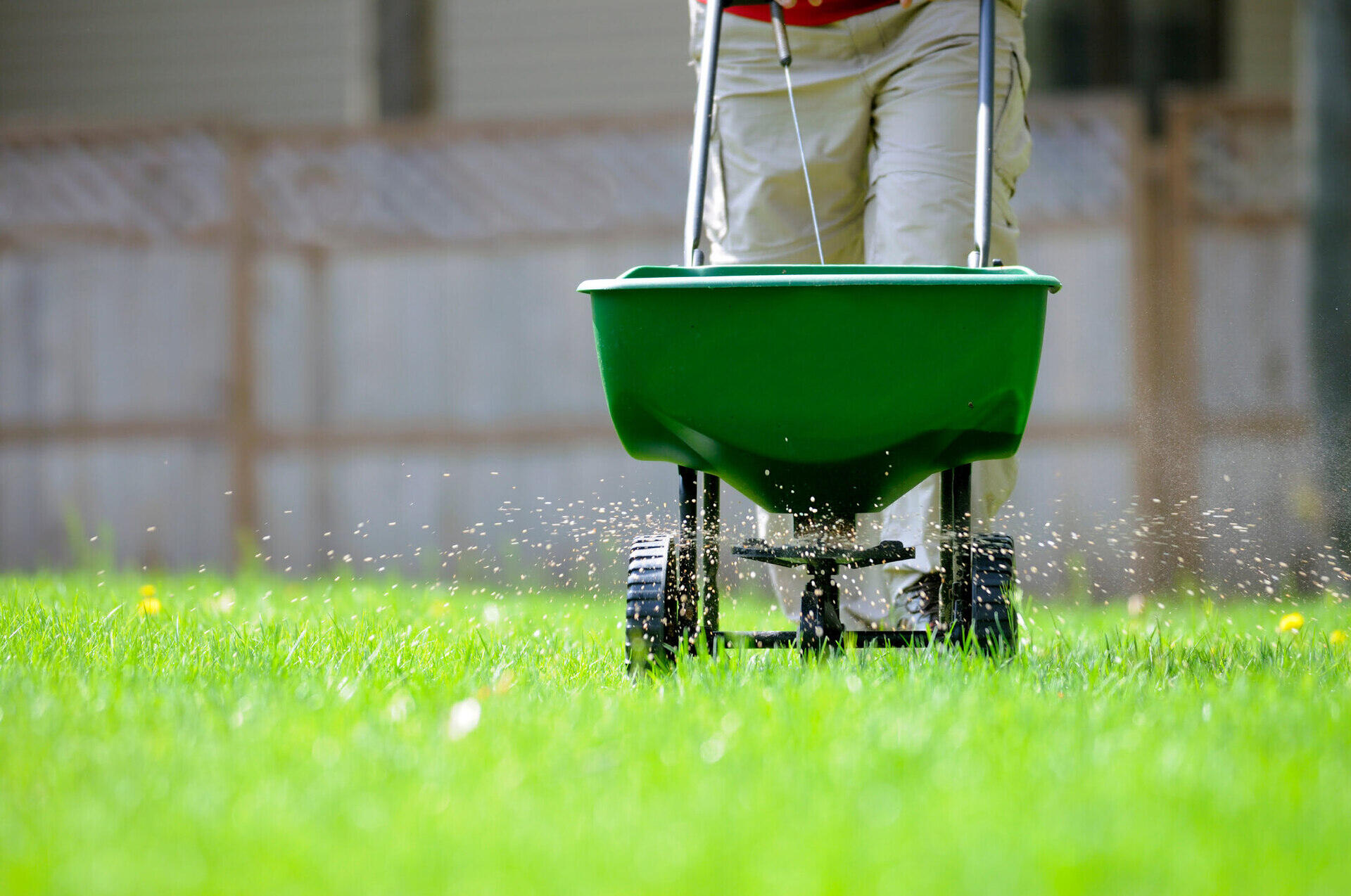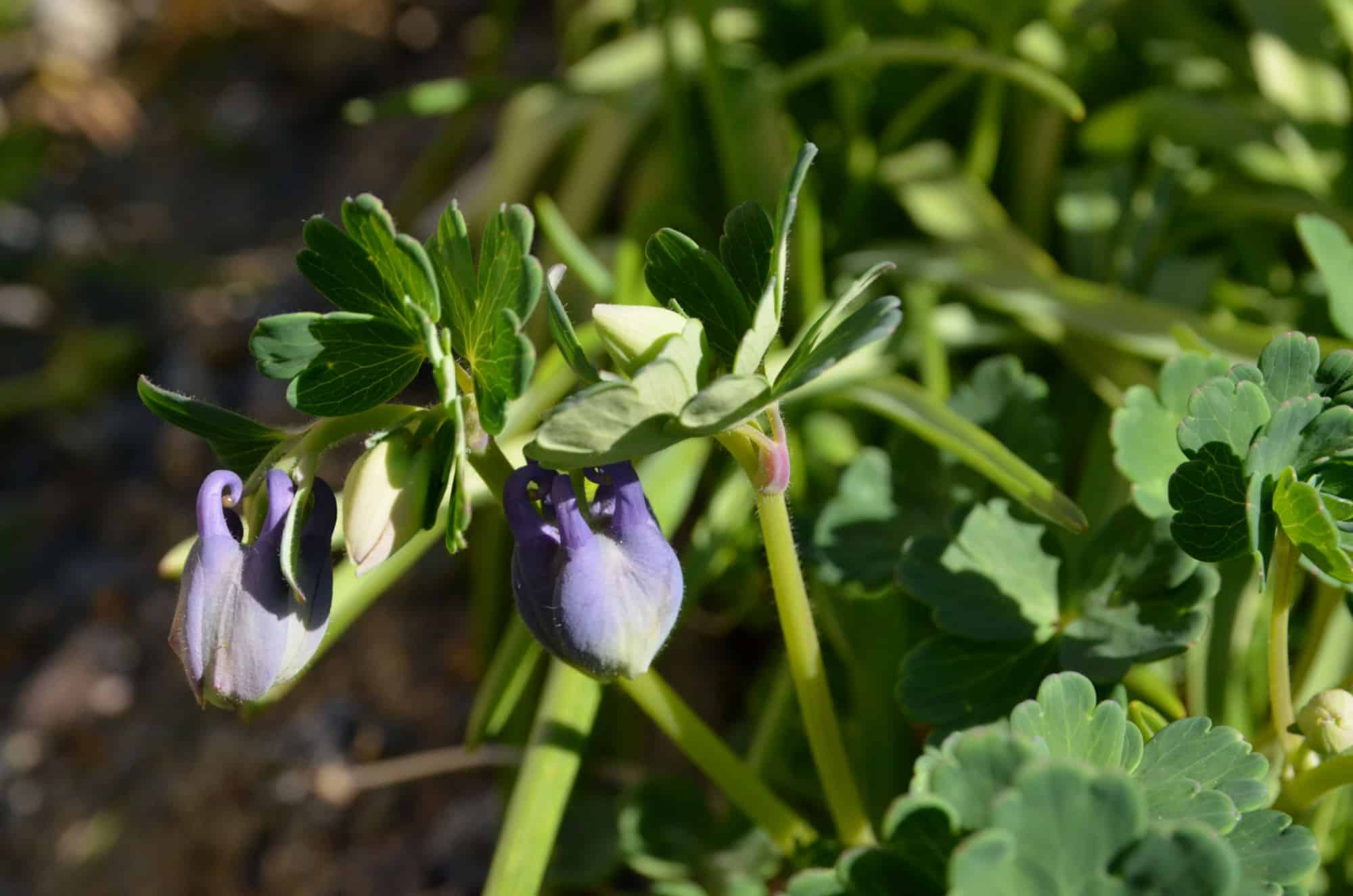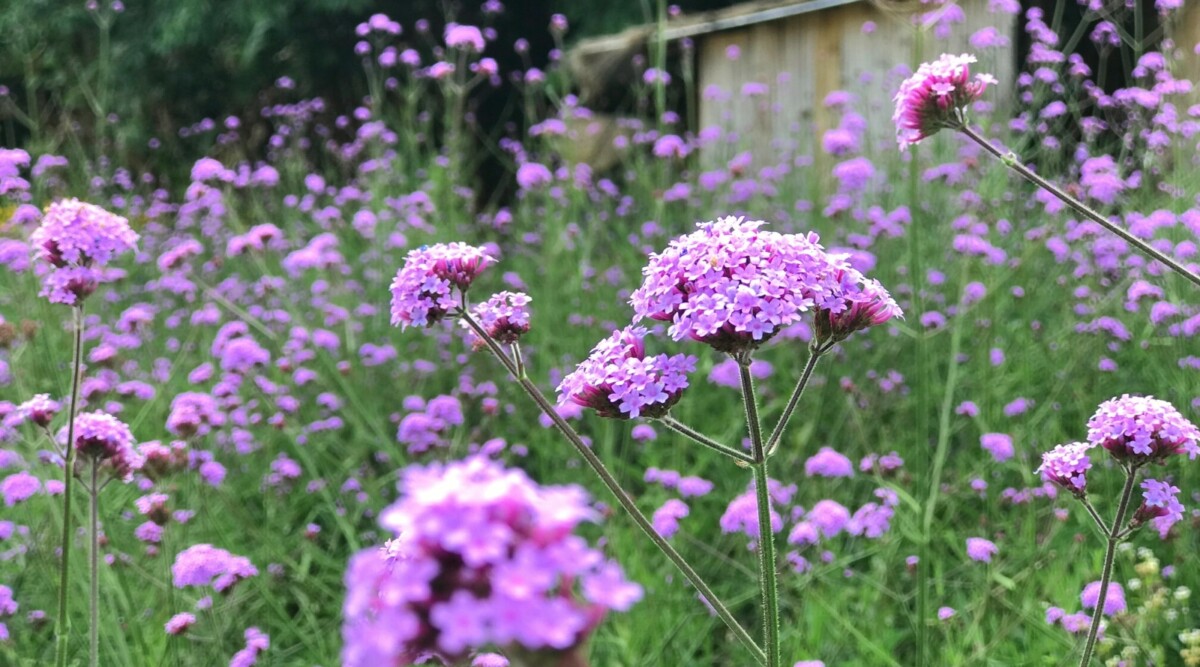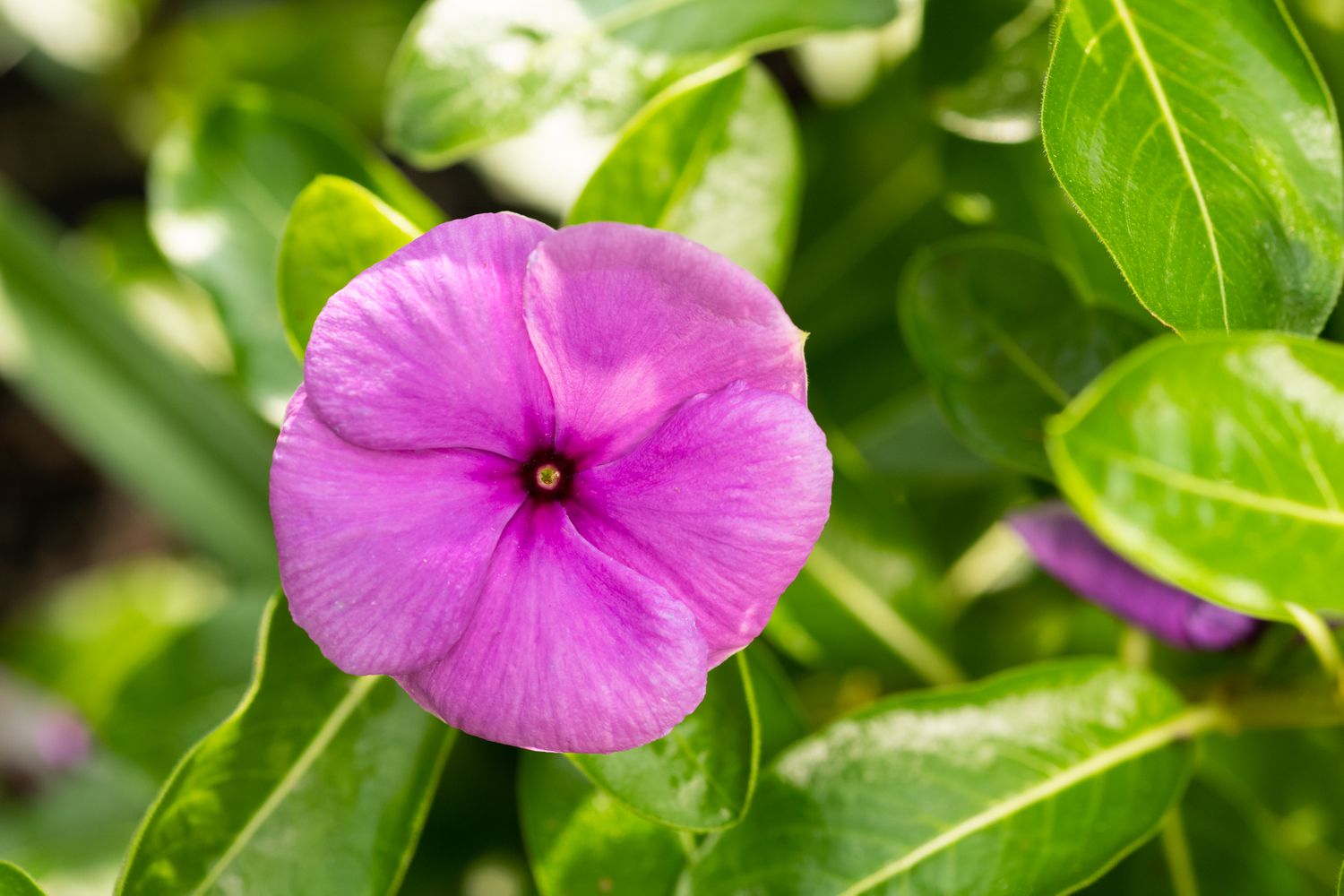Home>Garden Essentials>When To Plant Grass Seed In NY


Garden Essentials
When To Plant Grass Seed In NY
Modified: March 29, 2024
Looking to plant grass seed in your New York garden? Discover the best time to sow seeds and achieve a thriving, lush lawn.
(Many of the links in this article redirect to a specific reviewed product. Your purchase of these products through affiliate links helps to generate commission for Storables.com, at no extra cost. Learn more)
Introduction
Welcome to the world of gardening! If you’re a New Yorker looking to transform your lawn into a lush green paradise, planting grass seed is a great place to start. Whether you’re starting from scratch or revitalizing an existing lawn, knowing the right time to plant grass seed is crucial for successful growth.
Before you dive in, there are a few factors to consider to ensure the best results. New York’s climate and soil conditions play a significant role in the success of your grass seed, so understanding these factors will help you make informed decisions throughout the process.
In this article, we’ll delve into the different factors you should consider before planting grass seed in New York, the best time to sow your seeds, how to prepare the soil, and the steps to follow for successful planting. So let’s roll up our sleeves and get ready to create a beautiful, green lawn!
Key Takeaways:
- Choose the right time and conditions to plant grass seed in New York for a lush, thriving lawn. Consider climate, soil, sunlight, and watering needs before sowing your seeds.
- Prepare the soil, follow the planting steps, and provide consistent care for newly planted grass seed in New York to ensure successful growth and a beautiful outdoor space.
Read more: When To Plant Grass Seed In Rochester, NY
Factors to Consider Before Planting Grass Seed
Before you rush to plant grass seed in your New York yard, there are several key factors to take into account. By considering these factors, you can ensure that your grass seed has the best chance of successful germination and growth:
- Climate: New York experiences a range of climates, from the chilly winters of Upstate New York to the milder winters of Downstate. It’s important to choose grass seed varieties that are well-suited to your specific climate zone. Cool-season grasses like Kentucky bluegrass and perennial ryegrass are popular choices for New York lawns.
- Soil Conditions: Understanding your soil’s pH level and composition is crucial for optimal grass seed growth. Conduct a soil test to determine the pH level and make any necessary adjustments to ensure it falls within the ideal range for grass seed germination, which is typically between 6.0 and 7.5. Additionally, improve soil fertility by adding organic matter like compost or peat moss.
- Sunlight: Different grass seed varieties have different levels of sun tolerance. Assess the amount of sunlight your lawn receives throughout the day to choose a grass variety that matches those light conditions. For areas with shady spots, consider shade-tolerant grass seed varieties like fine fescue.
- Watering: Grass seeds require consistent moisture to germinate and establish strong roots. Consider the availability of water in your area and choose grass seed varieties that are drought-resistant if necessary. Also, ensure that your lawn has proper drainage to prevent waterlogging and the potential for disease.
- Usage: Determine the purpose of your lawn. Is it a high-traffic area where kids and pets will play? Or is it a more decorative lawn requiring less wear and tear? This will help you choose the right grass seed varieties that are best suited for your specific needs.
By taking these factors into consideration, you can select the most suitable grass seed varieties for your New York lawn, giving it the best chance to thrive and provide you with a beautiful outdoor space to enjoy.
Best Time to Plant Grass Seed in New York
The climate in New York varies across the state, so it’s important to know the best time to plant grass seed based on your specific location. Generally, the ideal time to sow grass seed in New York is during the early fall or spring, when temperatures are cooler but the soil is still warm.
Fall is considered the best time to plant grass seed in New York. During this time, the soil temperature remains warm, creating optimal conditions for seed germination and root development. Additionally, fall typically brings more consistent rainfall, reducing the need for frequent watering.
If you missed the fall window, spring is the second-best time to plant grass seed in New York. However, it’s important to wait until the soil has thawed and dried up sufficiently. This is usually around mid-April, depending on the specific region of New York.
Planting grass seed in the summer months is generally not recommended in New York due to the warmer temperatures and potential for drought conditions. The hot and dry weather can make it challenging for seed germination and survival.
It’s crucial to keep in mind that the weather and climate patterns can vary from year to year. Monitoring the soil temperature and moisture level is essential in determining the ideal time for planting grass seed. Consulting with a local garden center or fellow gardeners in your area can also provide valuable insights specific to your region.
By selecting the right time to plant grass seed in New York, you can maximize the chances of successful germination and establishment of your lawn, ensuring a healthy and vibrant backyard oasis for years to come.
Preparing the Soil for Planting Grass Seed
Before you start sowing grass seed in your New York yard, it’s essential to prepare the soil properly. Proper soil preparation sets the foundation for healthy grass growth and ensures that the seeds have the best chance of germination. Follow these steps to prepare your soil:
- Remove debris: Begin by clearing the area of any debris, such as rocks, sticks, or existing vegetation. This allows for better seed-to-soil contact.
- Test the soil: Conduct a soil test to determine the pH level and nutrient content of your soil. This will help you identify any deficiencies and adjust the soil accordingly. Soil testing kits are readily available at garden centers or through your local agricultural extension office.
- Amend the soil: Based on the results of your soil test, amend the soil with organic matter and necessary additives. Incorporate compost, peat moss, or well-aged manure into the soil to improve its structure, drainage, and nutrient content.
- Loosen the soil: Use a rake or a garden tiller to loosen the top layer of soil. This will break up any compacted areas and create a loose, friable surface for the grass seeds to penetrate.
- Level the ground: Smooth out any uneven areas in your yard by raking the soil to create a level surface. This will help ensure even water distribution and promote uniform grass growth.
- Address drainage: Proper drainage is essential for healthy grass growth. If your yard has drainage issues, consider incorporating drainage solutions such as French drains or regrading the landscape to redirect water flow.
By taking the time to properly prepare the soil, you create an optimal environment for your grass seeds to establish strong roots and develop into a thriving lawn. Remember to follow the specific guidelines provided by the grass seed manufacturer for your chosen seed variety to achieve the best results.
The best time to plant grass seed in New York is in the late summer or early fall, between mid-August and mid-September. This allows the seeds to establish before the winter and thrive in the spring.
Steps to Planting Grass Seed in New York
Now that you have prepared the soil, it’s time to start planting your grass seed in your New York yard. Follow these steps for successful seed establishment and growth:
- Rake the soil: Using a rake or a garden cultivator, lightly rake the soil to create a smooth seedbed. This will help the seeds make contact with the soil and promote germination.
- Spread the seed: Use a seed spreader or broadcast the grass seed evenly over the prepared soil. Follow the recommended seeding rate provided by the seed manufacturer to ensure proper coverage.
- Lightly rake the seed: After spreading the seed, gently rake the soil again with a leaf rake. This will help to lightly cover the seeds with a thin layer of soil, improving seed-to-soil contact and protecting the seeds from birds or other pests.
- Water the area: Immediately after planting, thoroughly water the seeded area. The soil should be kept consistently moist but not waterlogged during the germination and establishment period. Watering once or twice a day, depending on weather conditions, is typically sufficient.
- Maintain moisture: Continue to monitor the moisture level of the soil. Water as needed to keep the soil consistently moist until the grass seedlings reach a height of 2 to 3 inches.
- Mow carefully: Once the grass reaches the recommended mowing height, carefully mow the lawn with a sharp mower blade. Set the mower height to avoid cutting off more than one-third of the grass blade at a time.
- Establish a regular watering schedule: After the grass seedlings have germinated and established a strong root system, transition to a regular watering schedule. Water deeply and infrequently to encourage deeper root growth and drought tolerance.
- Fertilize as needed: Once the grass has established, follow a fertilization schedule based on the specific grass seed variety you planted. Avoid over-fertilizing as it can lead to excessive growth or burn the grass.
Remember, patience is key when it comes to growing a lush and healthy lawn. It may take several weeks for the grass seed to germinate and establish, and regular maintenance is necessary to ensure its continued health and beauty.
By following these steps and providing proper care, you’ll soon have a beautiful, thriving lawn in your New York yard.
Read more: When To Plant Gaillardia Seeds
Caring for Newly Planted Grass Seed
After planting grass seed in your New York yard, it’s important to provide proper care and maintenance to ensure the successful establishment and growth of your new lawn. Here are some essential tips for caring for newly planted grass seed:
- Watering: Watering is crucial for the germination and growth of grass seed. After planting, water the seeded area thoroughly to ensure the soil is moist to a depth of 4 to 6 inches. During the germination period, keep the soil consistently moist by watering once or twice a day, depending on weather conditions. Avoid overwatering, as it can lead to disease and shallow root growth.
- Mowing: Once the grass seedlings reach a height of 2 to 3 inches, it’s time to mow. Set your mower height to cut the grass at a height of 2 ½ to 3 inches. Be careful not to remove more than one-third of the grass blade at a time, as it can stress the newly establishing roots.
- Weed control: Keep an eye out for weeds that may compete with your newly planted grass seed. Hand-pull any visible weeds or use a selective herbicide that is safe for newly seeded lawns. However, it’s recommended to wait until the new grass has been mowed at least three times before applying any herbicides.
- Fertilization: Newly planted grass seedlings don’t require immediate fertilization. Wait until the grass has been mowed two to three times before applying a slow-release nitrogen fertilizer. Follow the recommended fertilizer application rates provided by the manufacturer based on your specific grass seed variety.
- Avoid heavy traffic: To allow the newly planted grass seed to establish and develop strong roots, avoid heavy foot traffic or any activities that may disturb the soil. Restrict access to the newly seeded areas until the grass is well-established.
- Monitor for pests and diseases: Keep an eye out for any signs of pests or diseases in your developing lawn. If you notice any issues, consult with a local garden center or professional landscaper to determine the appropriate course of action.
- Keep the soil moist: Even after germination, continue to keep the soil consistently moist until the grass seedlings are well-established. Proper irrigation is crucial for developing deep root systems and promoting healthy growth.
- Be patient: Growing a healthy and beautiful lawn takes time. It may take several weeks for the grass seed to germinate, and the lawn to fill in completely. Continue to provide proper care and maintenance, and in due time, you’ll be rewarded with a lush, green lawn.
Caring for newly planted grass seed requires diligence and consistency. By following these care tips, you’ll give your grass seed the best chance to establish a strong and vibrant lawn in your New York yard.
Summary
Planting grass seed in your New York yard is an exciting journey that can transform your outdoor space into a beautiful and inviting oasis. To ensure the success of your grass seed, consider several factors before planting, such as the climate, soil conditions, sunlight, watering needs, and the intended usage of your lawn.
The best time to plant grass seed in New York is typically during the early fall or spring. Fall provides optimal conditions for seed germination and growth, while spring is a viable alternative if you missed the fall window. Avoid planting grass seed in the summer months due to the warmer temperatures and potential for drought conditions.
Properly preparing the soil is crucial for the success of your grass seed. Clear any debris, conduct a soil test, amend the soil with organic matter, and ensure proper drainage. Once the soil is prepared, follow the steps to plant your grass seed, which include raking the soil, spreading the seed, lightly raking it again, and watering the area thoroughly.
After planting, caring for newly planted grass seed requires attention and maintenance. Water the area regularly, but avoid overwatering. Once the grass reaches the recommended mowing height, mow it carefully, and maintain a regular watering schedule. Keep an eye out for weeds, pests, and diseases, and address them promptly. Avoid heavy foot traffic on the newly seeded areas, and be patient as your lawn takes time to establish and grow.
By considering these factors and following the recommended steps for planting and caring for grass seed, you’ll be well on your way to creating a thriving and lush lawn in your New York yard. Enjoy the process, and soon enough, you’ll have a beautiful outdoor space to relax, play, and enjoy with family and friends.
Frequently Asked Questions about When To Plant Grass Seed In NY
Was this page helpful?
At Storables.com, we guarantee accurate and reliable information. Our content, validated by Expert Board Contributors, is crafted following stringent Editorial Policies. We're committed to providing you with well-researched, expert-backed insights for all your informational needs.















0 thoughts on “When To Plant Grass Seed In NY”